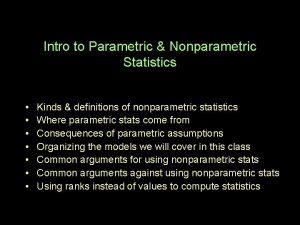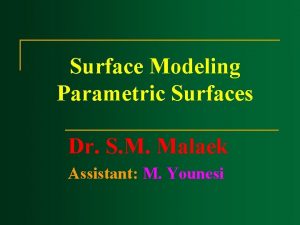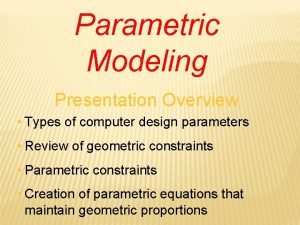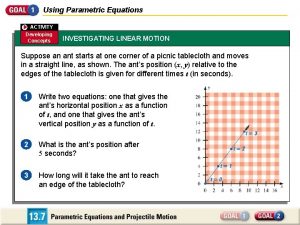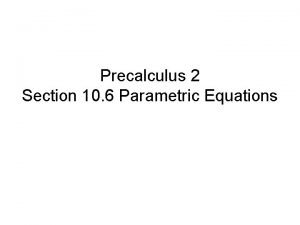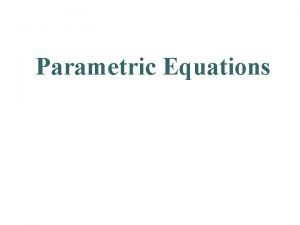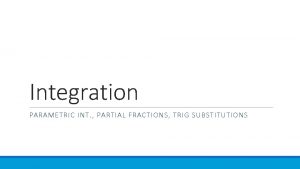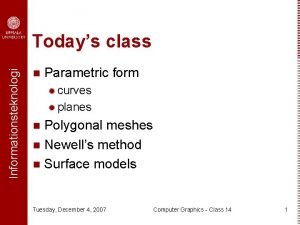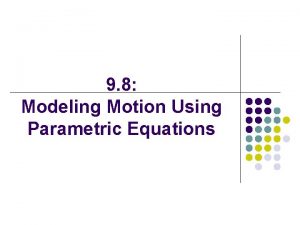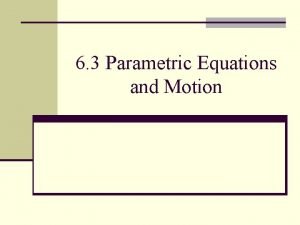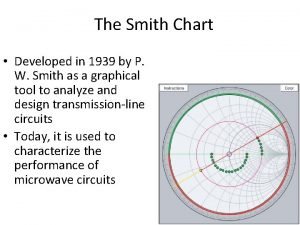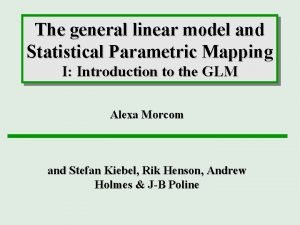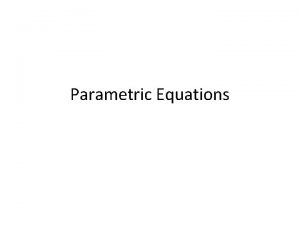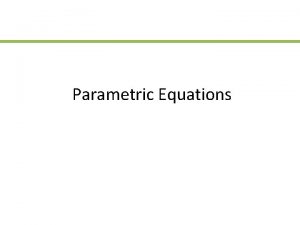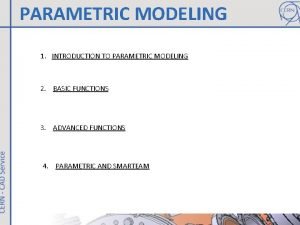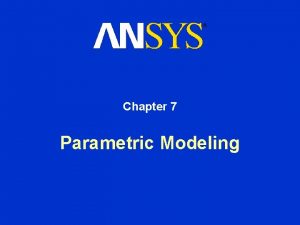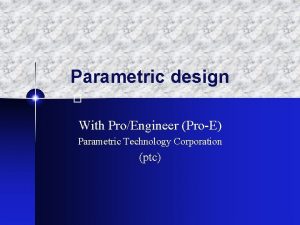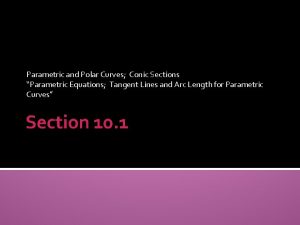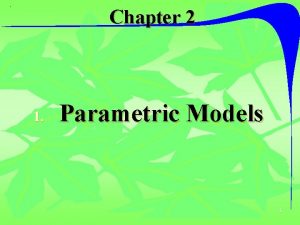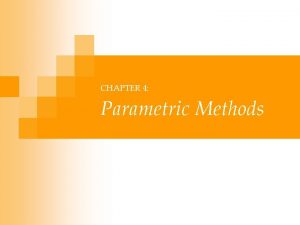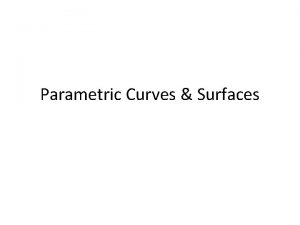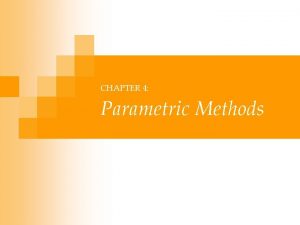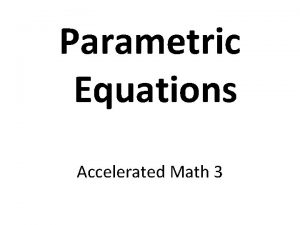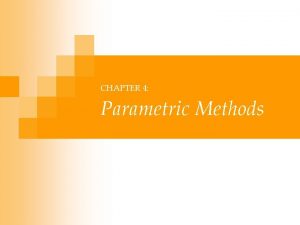Parametric Modeling Design and Modeling 2011 Project Lead







































- Slides: 39

Parametric Modeling Design and Modeling © 2011 Project Lead The Way, Inc.

3 D Modeling Steps - Sketch Step 1 Sketch Geometry

Sketch Geometry Line Sketch Tool

3 D Modeling Steps - Constrain Step 1 Sketch Geometry Step 2 Constrain Geometry A. Apply Geometric Constraints

Geometric Constraints Applied First Geometric Constraint Tools What do you think we do next?

3 D Modeling Steps - Constrain Step 1 Sketch Geometry Step 2 Constrain Geometry A. Apply Geometric Constraints B. Apply Dimension Constraints

Dimension Constraints Applied Second Dimension Constraint Tool

The geometry that has been constrained is a profile of an object.

3 D Modeling Steps - Extrude Step 1 Sketch Geometry Step 2 Constrain Geometry A. Apply Geometric Constraints B. Apply Dimension Constraints Step 3 Extrude the Object from the Profile A. Change View to Isometric (Home)

Profile Changed to Isometric Right mouse click, select Home View or use shortcut key F 6 or Click on Home icon by View Cube

3 D Modeling Steps - Extrude Step 1 Sketch Geometry Step 2 Constrain Geometry A. Apply Geometric Constraints B. Apply Dimension Constraints Step 3 Extrude the Object from the Profile A. Change View to Isometric (Home) B. Switch to Features Environment

Features Environment Select Finish Sketch to switch to Features Environment From this To this

3 D Modeling Steps - Extrude Step 1 Sketch Geometry Step 2 Constrain Geometry A. Apply Geometric Constraints B. Apply Dimension Constraints Step 3 Extrude the Object from the Profile A. Change View to Isometric (Home) B. Switch to Features Environment C. Preview the Extrusion

Extrusion Parameters Set Select Extrude from Create panel Extrusion Dialogue Box

3 D Modeling Steps - Extrude Step 1 Sketch Geometry Step 2 Constrain Geometry A. Apply Geometric Constraints B. Apply Dimension Constraints Step 3 Extrude the Object from the Profile A. Change View to Isometric (Home) B. Switch to Features Environment C. Preview the Extrusion D. Apply Extrusion

Profile Extruded Choose color here

Summary Steps in Parametric Modeling Step 1 Sketch Step 2 Constrain Geometry Step 3 Extrude

Parametric Modeling Part 2

Adding a Feature to a Solid Model Step 1 Add Sketch Plane to surface on which geometry will be sketched

Create New Sketch Plane Sketch Button Sketch plane selected with left mouse click

Steps for Adding a Feature Step 1 Add Sketch Plane Step 2 Sketch Geometry

Sketch Geometry View Face Normal View selected with View Face tool or by clicking on front of View Cube

Steps for Adding a Feature Step 1 Add Sketch Plane Step 2 Sketch Geometry Step 3 Constrain Geometry

Constrain Geometry

Steps for Adding a Feature Step 1 Step 2 Step 3 Step 4 Add Sketch Plane Sketch Geometry Constrain Geometry Create Feature

Feature Parameters Set Choose cut operation here Isometric (Home) view selected, Extrusion dialog box set

Feature Created

Summary Adding a Feature to a Solid Model Step 1 Step 2 Step 3 Create Sketch Plane Sketch Geometry Constrain Step 4 Create Feature

Let’s see it again… …this time we will create a hole feature.

Rotate Model View Cube Dynamic Rotation Rotate model with Dynamic Rotation tool or View Cube

Step 1 Create New Sketch Plane

Step 2 Sketch Geometry This tool used to… …create center point geometry

Step 3 Constrain

Step 4 Create Hole Feature selected from Modify panel

Completed Hole Feature

Model with Hole Feature Hidden Edge Display Model in Isometric view with hidden edges displayed

Summary Adding a Feature to a Solid Model Step 1 Step 2 Step 3 Create Sketch Plane Sketch Geometry Constrain Step 4 Create Feature

Why Parametric Modeling? Determine the shape and size of the geometry at any time during the design process. This part should be 5 in. long, not 3 in. How can we fix this without redrawing it?

Why Parametric Modeling? Benefits – Shape before size – Geometric and dimension constraints used to capture design intent – All files can be quickly updated – Existing data can be used for new designs – Quick design turn around
 Univariate statistical tests
Univariate statistical tests Parametric test and non parametric test
Parametric test and non parametric test Boris epshtein
Boris epshtein Parametric vs non parametric test
Parametric vs non parametric test Parametric surface modeling
Parametric surface modeling Parametric design ppt
Parametric design ppt Helen erickson biography
Helen erickson biography Engineering design brief example
Engineering design brief example Lead magnesium niobate/lead titanate
Lead magnesium niobate/lead titanate Dimensional modeling vs relational modeling
Dimensional modeling vs relational modeling Polar curve
Polar curve Explain the types of statistics
Explain the types of statistics Chapter 7 conic sections and parametric equations
Chapter 7 conic sections and parametric equations Parametric equations activity
Parametric equations activity Texture synthesis by non-parametric sampling
Texture synthesis by non-parametric sampling Parametric equations word problems
Parametric equations word problems Matplotlib example plot
Matplotlib example plot How to solve parametric equations
How to solve parametric equations Cramers v interpretation
Cramers v interpretation Wskim
Wskim Parametric insurance nat cat
Parametric insurance nat cat Parametric to cartesian calculator
Parametric to cartesian calculator Parametric vs nonparametric test
Parametric vs nonparametric test Parametric integration
Parametric integration Equation of ellipse in parametric form
Equation of ellipse in parametric form Vertical velocity
Vertical velocity Parametric motion
Parametric motion Cycloid parametric equation
Cycloid parametric equation Mesh dengan surface segi-empat disimpansebagai…
Mesh dengan surface segi-empat disimpansebagai… Spm jiscmail
Spm jiscmail How to solve parametric equations
How to solve parametric equations Complete smith chart
Complete smith chart Parametric map
Parametric map Parametric equations
Parametric equations Dr frost parametric equations
Dr frost parametric equations Parametric estimating
Parametric estimating Advantages and disadvantages of kruskal-wallis test
Advantages and disadvantages of kruskal-wallis test Nonparametric test
Nonparametric test Parametric differentiation
Parametric differentiation Parametric nonparametric 차이
Parametric nonparametric 차이



